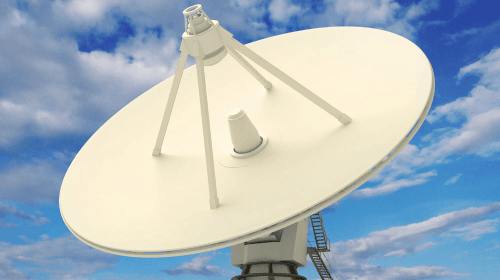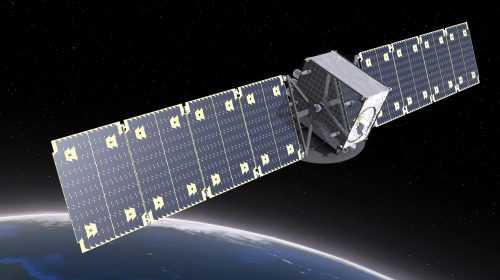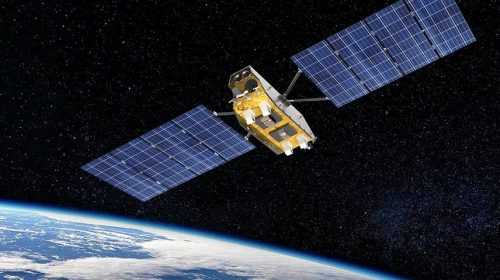- Page 1: iDirect enabled technology: Introduction
- Page 2: TCP over satellite and reliability
- Page 3: Rain fade and performance issues
- Page 4: Services
iDirect Satellite Internet access
The satellite communications industry is a mature and stable one. For decades, satellites have been used to transport analog voice and video signals around the globe, providing excellent quality and reliability. Reliability is the key factor here. Once the actual satellites are successfully launched and placed in operation their reliability approaches 100%. Failures have almost always occurred during launch or prior to deployment of services. In addition to voice and video signals, satellites have been successfully used to transport data for many years. Everyone has seen the dishes on top of gas stations and convenience stores that are used for low-speed transactions such as credit card approvals. With the advent of the Internet, satellite technology companies have added broadband IP support making it possible for even the most remote locations to participate in the World Wide Web.
Most legacy broadband satellite solutions have been built by piggybacking IP on top of DVB satellite technology, which was designed for television and video. These solutions are inefficient, sluggish, and generally provide poor uplink performance and are lacking in support for applications such as VoIP. New technology from iDirect, developed from the ground up to support IP over satellite, has had the effect of upgrading performance in a manner that is similar to the upgrade from a shared Ethernet hub to a switch. The resulting solution provides enterprise class quality and reliability.
Legacy satellite solutions
The broadband satellite industry is undergoing an evolution similar to that experienced by wireline services in the early 90’s. At that time, most companies who wished to network their remote locations at speeds that exceeded dial up capability were required to install point-to-point leased lines, using either DDS circuits or very expensive T-1 lines. With the introduction of shared resource’ technologies such as Frame Relay, SMDS, and ATM it became possible to share infrastructure costs and to share bandwidth between multiple locations. In particular, the popularity of Frame Relay made it possible for the first time, for companies to network their remote sites with relatively high-speed connections at affordable prices. This capability made it possible for software application developers to deliver company-wide applications that could be deployed across the entire organisation, improving communications and productivity, and eliminating duplicate administrative functions at each branch office. Of course, with the advent of the Internet and broadband services, applications grew in functionality and bandwidth requirements. Now it can be argued that roll-out of new Internet-enabled applications are stalled due to the lack of ubiquitous, affordable broadband service for all remote sites regardless of location.
In the satellite industry, data services were initially delivered over dedicated point-to-point circuits known as Single Channel Per Carrier (SCPC) that are very similar to point-to-point leased lines. Because bandwidth and communication resources are not shared, this is an expensive undertaking. Similar to the technological advances that took place in the wireline industry in the early 90’s, shared resource’ solutions are now becoming available in the satellite industry, driving down the costs for connecting remote sites to the Internet and/or to corporate headquarters.
Many of the shared broadband satellite solutions that are available today are based on technology called TDMA, and like Frame Relay, they take advantage of the fact that IP traffic is very bursty in nature. Most applications require short bursts of information requesting data, followed by the download of the requested information, then a period of inactivity as that information is reviewed and worked with. This creates a great deal of idle or wasted bandwidth on a dedicated SCPC circuit. As IP traffic tends to be asymmetric, with anywhere from 4 to 8 times as much download traffic as upload traffic in typical applications. The bursty nature of IP makes it possible to share bandwidth among multiple users, effectively reducing costs and increasing efficiency.
Most legacy broadband satellite services were developed primarily by piggybacking IP on top of the existing technology used by satellites for delivering analogue voice and data called DVB. DVB is used to transport television signals from companies such as DirecTV and Dish Network. To transport IP packets, these solutions simply encapsulate the IP traffic in MPEG video frames that are transported by DVB as though they are voice/video. The good news is that DVB/MPEG is a mature technology and the chip-sets to provide this service are relatively inexpensive. The bad news is that this is not an optimum solution for transporting IP traffic as there is a great deal of inefficiency and unnecessary overhead. The download of IP traffic to remote sites is actually the easy part. The uplink or return path is the most difficult to design for maximum efficiency and performance, balanced by cost.
Today there are any number of broadband satellite solutions available that provide marginal broadband service for customers, but many have deficiencies that have resulted in slow acceptance of broadband satellite as a mainstream solution for business users. On the next page we will take a closer look at some of these critical issues and discuss how the new iDirect technology has resolved them.





